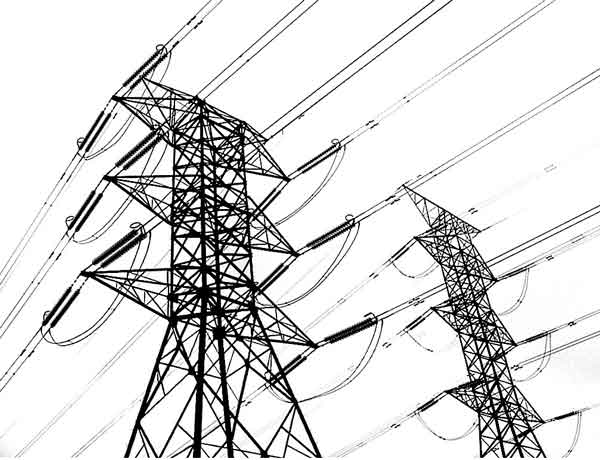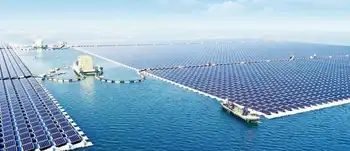Ontario faces U.S. challenge on Great Lakes
By Toronto Star
Protective Relay Training - Basic
Our customized live online or in‑person group training can be delivered to your staff at your location.

- Live Online
- 12 hours Instructor-led
- Group Training Available
The tease.
"It's too early," he said, sipping coffee at a downtown hotel one morning.
Still, as global president of Vestas' offshore wind division, Soe-Jensen made it clear that the province – and more generally, the prospect of developing offshore wind farms in the Great Lakes-has captured the attention of the world's largest wind-turbine maker.
"We just need to see some orders," he told the Star.
Europeans, short on land and facing a rapidly maturing onshore wind market, got into the offshore game in the early 1990s. Today, more than 830 offshore wind turbines operate in nine European countries, with thousands more being built in the next few years.
North America, by comparison, is where Europe was more than 15 years ago. Not a single offshore turbine has been installed off its waters, let alone in the fresh waters of the Great Lakes. Ontario, hungry for jobs and eager to kick-start its struggling manufacturing sector, is in a good position to change that.
But we're not alone. New York, Ohio, Michigan and several other northeast states are also in the race. The jurisdiction that can move the quickest, the theory goes, stands the best chance of attracting big-name manufacturers, not to mention much of the supply chain that could support offshore projects throughout the Great Lakes and along the northeast coast of the United States.
The stakes are huge. Emerging Energy Research estimates more than 6,000 megawatts of offshore wind energy will be developed in North America by 2020, representing billions of dollars of investment and up to 2,000 turbines. Much of that capacity could be developed in the Great Lakes using equipment and skills from Ontario.
"Ontario is an awakening renewable energy giant," said John Kourtoff, president of Trillium Wind Power, which has ambitious plans to develop in Lake Ontario. "It has this enormous inland of fresh water that can be developed exclusively on the Canadian side."
On the U.S. side eight states border the Great Lakes. Ontario, by comparison, borders all lakes with the exception of Lake Michigan and has by far the greatest shoreline exposure of any jurisdiction. "Nobody else can play that card," Kourtoff said.
He compared the opportunity for offshore wind development to the development of hydroelectric power at Niagara Falls during the early 1900s that to this day supplies a large share of Ontario's electricity needs. "I see this as a reset as creating Ontario 2.0."
It's a fact that offshore winds are more expensive to harness compared to the onshore variety. The turbines, standing as tall as the Statue of Liberty, are much bigger than their onshore cousins and installing them – often in turbulent waters - is risky business.
But offshore winds have some major advantages as well. They blow much stronger and more often. Offshore projects can be located closer to large populations that need the power. And the winds are consistent, making them a more reliable source of clean electricity.
There are also distinct advantages of building in the Great Lakes. The water is not salty, so equipment doesn't require as much maintenance as a result of corrosion. Weather and wave activity over fresh water bodies is typically calmer than in ocean environments, making it faster and less costly to install the turbines.
Trillium wants to spend $1.7 billion to put up to 740 wind turbines in northeast Lake Ontario between 17 and 28 kilometres from the shores of Prince Edward County. The company has three other projects under early development that, all combined, would bring 3,700 megawatts of power capacity to Ontario's grid. They represent nearly $15 billion in investment over the next decade.
Another developer, Windstream Energy, in April became the first company in North America to get a power purchase agreement for an offshore wind farm. The Ontario Power Authority, under its feed-in-tariff program, agreed to pay Windstream 19 cents per kilowatt-hour for electricity from its planned 300-megawatt offshore wind farm in Lake Ontario.
Ian Baines, president of Windstream, credits Ontario for being the first jurisdiction to establish a feed-in-tariff for offshore wind. "Ontario leads the pack, thanks to that decision," he said.
Both Trillium and Windstream say they plan to build an industry around their projects, which will require new shipping infrastructure, as well as equipment like barges, drill rigs and jacks.
Vestas is watching the market closely. It already has a partnership with Trillium and has been busy scoping out local infrastructure in southern Ontario and talking with potential suppliers in the region. Another good sign: it has picked Toronto as its North American office for offshore wind sales.
But Vestas isn't the only one, nor is Ontario the only jurisdiction being watched. Siemens has a robust offshore wind business in Europe and is keeping an eye on the Great Lakes region.
General Electric, the undisputed leader of the U.S. onshore wind market, wants to corner the offshore market as well. It recently partnered with Ohio's Lake Erie Energy Development Corp. to build a five-turbine wind farm off the shores of Cleveland – the first of what it hopes will be many.
Ohio, like Ontario, has a vision of becoming a hub of manufacturing for an emerging offshore wind market over the next decade. New York has the same goal. Its state power authority wants to build up to 500 megawatts of offshore wind projects in Lake Ontario or Lake Erie over the next few years.
In December, New York put out a call for proposals and received five applications from developers. Winning bidders are expected to be chosen by early 2011. Trillium was asked to bid but declined.
"There is no price certainty there, and no permitting and regulatory certainty," said Kourtoff. "It's just so much easier for us to participate here on the Ontario side."
Easier, maybe, but it won't be a cake walk. Just ask offshore wind developers on the Atlantic coast that have faced a wall of resistance since their projects were announced, despite strong support from the U.S. government. In fact, it's been easier to do deepwater oil drilling in the Gulf of Mexico than it's been to erect a wind turbine in offshore waters.
Environmentalists and affected communities remain deeply divided on the benefits of these large offshore wind projects and their impacts on birds, aquatic life, and local scenery. Legal and regulatory challenges continue to hobble developers' efforts. This kind of resistance is likely to spill over into Great Lakes projects as well.
To a certain extent it already has. Toronto Hydro has a plan to build a 200-megawatt offshore wind farm in Lake Ontario, along a 25-kilometre length of water between Toronto's Leslie St. and the town of Ajax.
Some residential groups have been quick to protest what they consider the industrialization of the Great Lakes. Birds, bats, fish, drinking water – all these and more would be threatened by the Toronto Hydro project, they argue.
They also attack the economics of wind energy and say the visual impact of the turbines will affect property values along the lake. Noise and health issues have been raised as well.
Perhaps in anticipation of these concerns, the Ontario government proposed new rules last month that would prevent offshore wind turbines from being installed closer than five kilometres from the shoreline.
If passed, the rules would forbid some projects – including Toronto Hydro's proposed wind farm-from going forward. "The direction is not encouraging," said Jack Simpson, director of generation at Toronto Hydro.
But even with the proposed setback, it's unlikely to silence critics hell-bent on keeping the Great Lakes turbine-free. "We will continue our efforts to stop the industrialization of Lake Ontario," said Harry Spindel, vice-president of the Guildwood Village Community Association in Scarborough.
Kourtoff said Trillium's projects won't be affected if the five-kilometre setback is passed, but he's not letting that give him a false sense of security. Even though residents along the shore won't be able to see much of Trillium's turbines on the lake, the company is going out of its way to consult the surrounding community.
Last month, for example, Trillium dropped 17,000 information pamphlets in area mailboxes.
"We're going to the nth degree to make sure we go beyond what's required," said Kourtoff, pointing out that aquatic, wave, water current and ice studies are done and bird studies are almost complete.











